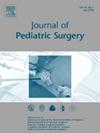Magnetic Compression Anastomosis for Anorectal Malformations: Feasibility and Efficacy in Swine Model and Clinical Observation
IF 2.4
2区 医学
Q1 PEDIATRICS
引用次数: 0
Abstract
Background
Patients with anorectal malformations (ARM) commonly experience post-operative bowel dysfunctions due to inherent neuromuscular dysplasia and surgical damage to extraluminal structures. Magnetic compression anastomosis (MCA) minimizes injury to the perirectal neurovascular bundle and sphincter muscles via an endoluminal approach. We evaluated the preclinical feasibility and healing efficacy of a novel MCA device in a swine model of ARM and applied the device to an ARM patient.
Methods
Two prototype MCA devices (8 mm and 10 mm diameter) were tested at piglets'abdominal wall tissue to evaluate suitable magnetic force to cause local ischemia and necrosis. Eight piglets underwent ARM modeling and were divided into MCA or hand-sewn (HS) anastomosis groups (n = 4 per group). After two weeks of monitoring, the piglets were sacrificed. Radiography assessed the MCA progression, and anastomosis integrity was evaluated through histology. The device was later modified and applied to an infant with intermediate ARM.
Results
The 10 mm MCA devices successfully aligned at the piglets'abdominal wall tissue, while the 8 mm MCA device failed. The 10 mm MCA devices were selected for rectoanal anastomosis in model and showed an average anal recanalization time of 8 days, with smooth anastomosis sites and no foreign body response. Minimal inflammation was seen in the MCA group compared to HS group. The modified MCA device was applied to the ARM patient, with successful anastomosis by postoperative day 8.
Conclusion
MCA is a safe and effective method for anastomosis in ARM, providing a foundation for further clinical applications.
Level of evidence
III.
求助全文
约1分钟内获得全文
求助全文
来源期刊
CiteScore
1.10
自引率
12.50%
发文量
569
审稿时长
38 days
期刊介绍:
The journal presents original contributions as well as a complete international abstracts section and other special departments to provide the most current source of information and references in pediatric surgery. The journal is based on the need to improve the surgical care of infants and children, not only through advances in physiology, pathology and surgical techniques, but also by attention to the unique emotional and physical needs of the young patient.

 求助内容:
求助内容: 应助结果提醒方式:
应助结果提醒方式:


